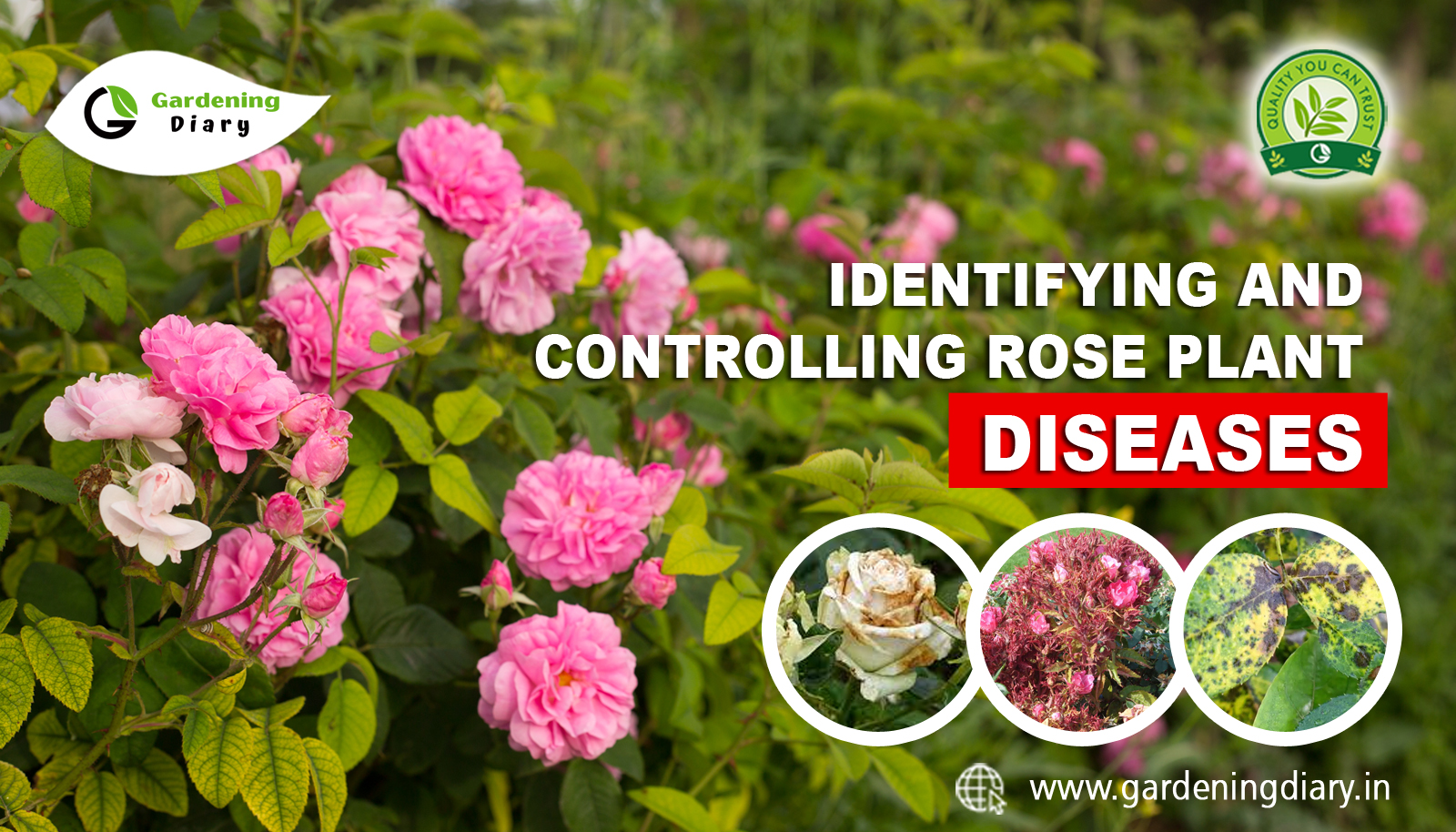
Identifying and Controlling Rose Plant Diseases
Roses are pretty flowers that stick around for a long time. They're like the superstars in the plant world, with lots of different types and colors—white, yellow, pink, red, and maroon. These flowers have pointy stems and shiny green leaves with jagged edges. People love roses because they look and smell amazing.
How to identify common rose plant diseases:
Black Spot on Roses:
Black spot is a type of fungal disease. It likes warm, wet, or humid weather. These spots get bigger and get a yellow ring around them. Eventually, the whole leaf turns yellow. When this happens, the leaves start falling off the plant. If the infection is severe, the plant can lose all its leaves.
Powdery Mildew on Roses:
Powdery mildew is also a fungal disease. It stays hidden until the right conditions come along. For powdery mildew, that's when it's hot and dry during the day, but cool and damp at night. When leaves are young, they might start to fold or wrinkle. After that, you'll notice mold appearing on them and the stems. This will be followed by a thin white layer that spreads all over the rose bush.
Rose leaf spot:
Rose leaf spot is different from black spot, but they act a lot alike. Its Symptoms begin as small circles of different sizes. Later, they get a purple ring around them. As things get worse, the circles grow, and the middle turns grayish-brown as the tissue dies. Mostly, these spots show up on leaves, but they can appear on other parts of the plant too.
Rose swellings:
Rose swellings is a problem for many plants, including roses. It happens because of a bacteria. This bacteria messes up the plant's ability to drink water and get nutrients. That leads to weak growth and plants that get stressed and hurt easily.
Rose bugs:
Rose bugs are little reddish-brown bugs with dark spots. They're only about a quarter-inch long, but they can do a lot of damage. Even their small, white babies can harm roses. These bugs love yellow and white roses.The best way to deal with them is to pick them off by hand. If you see them on your plants, get rid of any buds they've been near because they might have eggs inside. Always clean up your garden regularly to keep them away.
Thrips on Roses:
Rose flower thrips make buds twist and might leave brown streaks on petals if they open. They also mess up leaves, making them curl or twist. Thrips are tough to control because they hide in buds and multiply fast. They can stick around in debris all winter, so cleaning up in fall is important.
Organic Methods for Controlling Rose Diseases:
Neem oil:
Spray the leaves and flowers of infested plants with neem oil. Neem oil is a natural, biologically safe ingredient that kills thrips quickly.
Kem:
Kem is recommended for controlling thrips in plants.
In conclusion, preventing diseases in rose plants is essential for maintaining their health and beauty. Using toprose, neem oil, kem is the best way to controlling diseases. To keep rose plants healthy, it's important to clean up any infected bits and pieces and throw them away. Choosing roses that can fight off diseases and giving them the best conditions to grow makes them stronger against sickness. Checking on them often and taking action quickly if you spot any problems can stop diseases from spreading. Taking care of rose plants in this way means you can have beautiful and strong roses in your garden for a long time.
www.gardeningdiary.in